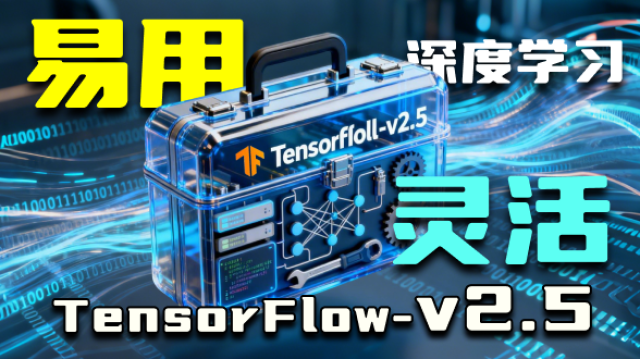Tensorflow
MINIST数据集
fig2, ax2 = plt.subplots(figsize=(2, 2))
ax2.imshow(np.reshape(mnist.train.images[11], (28, 28)))
plt.show()
# # 第一层的卷积输出的特征图
input_image = mnist.train.images[11:12]
conv1_16 = sess.run(h_con1, feed_dict={x: input_image}) # [1, 28, 28 ,16]
conv1_transpose = sess.run(tf.transpose(conv1_16, [3, 0, 1, 2]))
fig3, ax3 = plt.subplots(nrows=1, ncols=16, figsize=(16, 1))
for i in range(16):
ax3[i].imshow(conv1_transpose[i][0]) # tensor的切片[row, column]
plt.title('Conv1 16x28x28')
plt.show()
# 第一层池化后的特征图
pool1_16 = sess.run(p_pool1, feed_dict={x: input_image}) # [1, 14, 14, 16]
pool1_transpose = sess.run(tf.transpose(pool1_16, [3, 0, 1, 2]))
fig4, ax4 = plt.subplots(nrows=1, ncols=16, figsize=(16, 1))
for i in range(16):
ax4[i].imshow(pool1_transpose[i][0])
plt.title('Pool1 16x14x14')
plt.show()
# 第二层卷积输出特征图
conv2_32 = sess.run(h_con2, feed_dict={x: input_image}) # [1, 14, 14, 32]
conv2_transpose = sess.run(tf.transpose(conv2_32, [3, 0, 1, 2]))
fig5, ax5 = plt.subplots(nrows=1, ncols=32, figsize=(32, 1))
for i in range(32):
ax5[i].imshow(conv2_transpose[i][0])
plt.title('Conv2 32x14x14')
plt.show()
#第二层池化后的特征图
pool2_32 = sess.run(p_pool2, feed_dict={x: input_image}) # [1, 7, 7, 32]
pool2_transpose = sess.run(tf.transpose(pool2_32, [3, 0, 1, 2]))
fig6, ax6 = plt.subplots(nrows=1, ncols=32, figsize=(32, 1))
plt.title('Pool2 32x7x7')
for i in range(32):
ax6[i].imshow(pool2_transpose[i][0])
plt.show()
Kears
import numpy as np
from keras.models import load_model
model = load_model('face_model.h5')
img_path = 'G:/PythonN/Graduation/face/1/19.jpg'
# We preprocess the image into a 4D tensor
from keras.preprocessing import image
img = image.load_img(img_path, target_size=(100, 100))
img_tensor = image.img_to_array(img)
img_tensor = np.expand_dims(img_tensor, axis=0)
# Remember that the model was trained on inputs
# that were preprocessed in the following way:
img_tensor /= 255.
# Its shape is (1, 150, 150, 3)
print(img_tensor.shape)
import matplotlib.pyplot as plt
plt.imshow(img_tensor[0])
plt.show()
from keras import models
layer_outputs = [layer.output for layer in model.layers[:7]]
# Creates a model that will return these outputs, given the model input:
activation_model = models.Model(inputs=model.input, outputs=layer_outputs)
activations = activation_model.predict(img_tensor)
# These are the names of the layers, so can have them as part of our plot
layer_names = []
for layer in model.layers[:7]:
layer_names.append(layer.name)
images_per_row = 16
# Now let's display our feature maps
for layer_name, layer_activation in zip(layer_names, activations):
# This is the number of features in the feature map
n_features = layer_activation.shape[-1]
# The feature map has shape (1, size, size, n_features)
size = layer_activation.shape[1]
# We will tile the activation channels in this matrix
n_cols = n_features // images_per_row
display_grid = np.zeros((size * n_cols, images_per_row * size))
# We'll tile each filter into this big horizontal grid
for col in range(n_cols):
for row in range(images_per_row):
channel_image = layer_activation[0,
:, :,
col * images_per_row + row]
# Post-process the feature to make it visually palatable
channel_image -= channel_image.mean()
channel_image /= channel_image.std()
channel_image *= 64
channel_image += 128
channel_image = np.clip(channel_image, 0, 255).astype('uint8')
display_grid[col * size: (col + 1) * size,
row * size: (row + 1) * size] = channel_image
# Display the grid
scale = 1. / size
plt.figure(figsize=(scale * display_grid.shape[1],
scale * display_grid.shape[0]))
plt.title(layer_name)
plt.grid(False)
plt.imshow(display_grid, aspect='auto', cmap='viridis')
plt.show()
Tensorflow部分转载自https://blog.csdn.net/u014281392/article/details/74316028





















 858
858

 被折叠的 条评论
为什么被折叠?
被折叠的 条评论
为什么被折叠?








